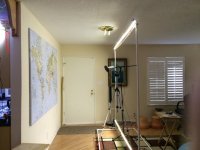OCMike
100 W
dnmun said:so that is the reason. the pop may have been a fuse inside the charger so look under the feet to see if there are screws to open the case and see. do you have a voltmeter? know how to use an ohmeter to measure continuity?
The power supply fail is a reason? What is that the reason for?
I thought fuses protect against power surges. I don't see how a surge may have occurred - what surged? The AC or my battery? I think what likely happened is the power supply detected sustained and building push-back from the battery - in other words electricity flow slowed as the battery built up charge and this isn't expected given the power supplies intended use - so the power supply has logic built in to protect against this scenario which is deemed a danger given the power supplies intended use.
No screws on the power supply - it's a sealed case - but it has a seam, so I'm sure it opens without breaking it somehow - any idea of how. It would be nice if I could just reset some kind of breaker inside but I bet some kind of diode or something needs to be replaced on the circuit board - or may be just bypassed so that it won't happen again - but now I'm getting into an area where I need to know what I'm talking about before I attempt anything.
I'm kind of bummed -- I want a portable power supply to carry with me!






